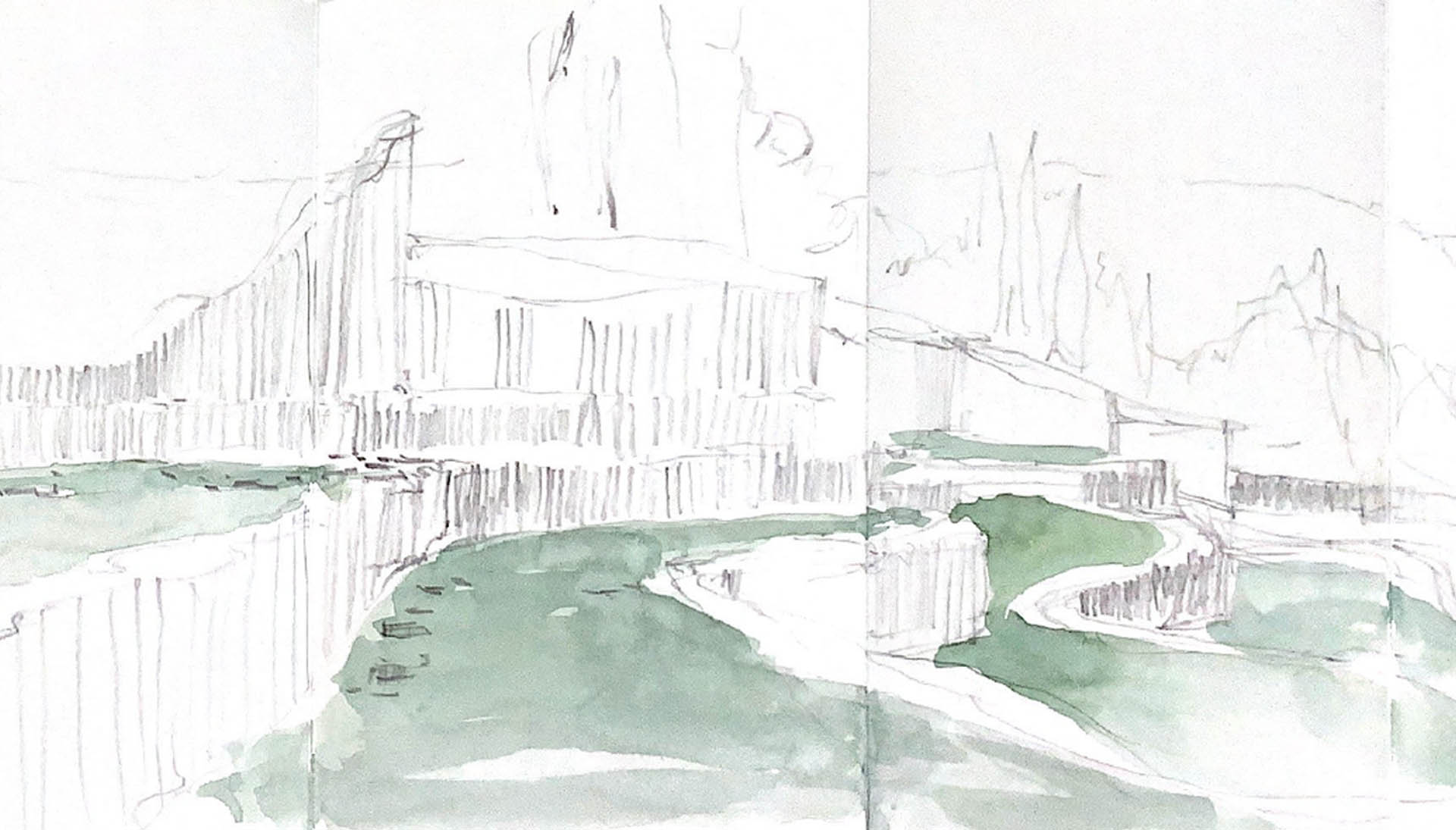Stari Most and the Partisan Cemetery (designed by mimar Hajrudin in the 16th and protomajstor Bogdan
Bogdanović in the 20th century) are urbanistic and architectural antechambers into the heart of Mostar.


Stari Most and the Partisan Cemetery (designed by mimar Hajrudin in the 16th and protomajstor Bogdan
Bogdanović in the 20th century) are urbanistic and architectural antechambers into the heart of Mostar.
A brief note on some significant absences
Stari Most and the Partisan Cemetery (designed by mimar Hajrudin in the 16th and protomajstor Bogdan Bogdanović in the 20th century) are urbanistic and architectural antechambers into the heart of Mostar.
At its very best, architecture can become art. When inhabited, lived, loved, the works of architecture are cornerstones of an urban identity – as those two are to the city of Mostar, in both their magnificent, eternal presences and by tragic, even temporary absences. One of these two urban complexes is listed, and the other one is on the path towards UNESCO World Heritage List.
The idea of a better world deserves Mostar.
The geometry of Hayrudin’s arch triggers the memories of two Romes of the late antiquity, spatial perfection and historical complexity of Pantheon and Hagia Sophia. Elegant leap of the Old bridge also frames an exquisitely shaped, meaningful void which, for centuries, triggers local sense of belonging and pride. The rhapsody of Bogdan’s war memorial resonates directly with Goethe’s dictum how architecture is frozen music.
The petrified crescendo of those stone organs enlightens Mostar.
Absences seek to be filled in. That Bridge and that Park were designed and built to generate urban and urbane life, to let the citizens of Mostar be, to trigger a sense of pride in living their own city, of being that city. Once created and lived, such energies stay. As the tragedy of the Old Bridge itself has shown, precisely in the ways which psychological insights into human soul expose, the suppressed cries always resurface.
Such absences cannot be silenced.
Stari most has regained its voice. The acropolis of Mostar also possesses the power of Munch’s scream, the silence which cannot stay unheard. Mostar needs their dialogue, the beat that replenishes its heart.
Darko Radović
Bangkok, 13.2.2023.
Capturing Mostar – a sketch of the Partisans Cemetery, Mostar (unfinished)
This is an effort to capture the serenity of the Memorial, in situ.
One of my visual reflections of/on the city of Mostar, for an intended exhibition which I hope to have – there.
Davisi Boontharm
Mostar, 11.9.2022.
